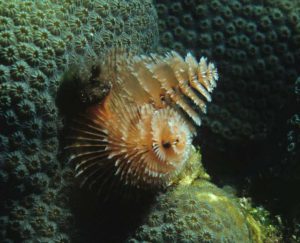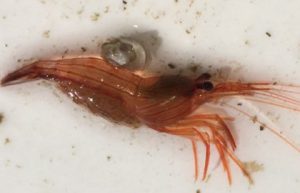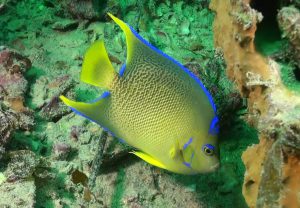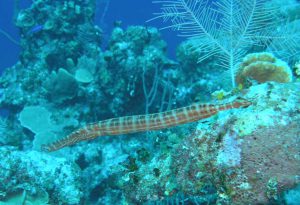2019 is almost gone; where did the time go? I should have seen this coming! After all, holiday decorations started popping up in stores in October… or was it September? I’m sure I’m not alone in thinking much too soon. But, did you know that underwater, there are critters in holiday mode all year long? Some, you must travel around the world to see, but a fair amount can be found right here in Florida.

For instance, locally, most of our real Christmas trees come from farms up north, but underwater, Christmas tree worms adorn many of our natural and artificial reefs. These segmented worms live in calcareous tubes attached to reef structure. And, they have two beautiful, feathery spirals – which look like little Christmas trees – that extend up into the water and are used for filter-feeding. Worms aren’t the only underwater Christmas trees, the Christmas tree hydroid nudibranch – a type of shell-less mollusk – inhabits reef areas around Christmas tree hydroids – a stinging invertebrate that resembles a fern… akin to a Christmas Grinch if you touch it!

When I was growing up, we always put candy canes on our Christmas tree. You’d have to travel to the Indo-Pacific to find a candy cane shrimp or candy cane sponge, but candy canes are often made of peppermint, and one need not travel far to find peppermint shrimp, peppermint bass and peppermint gobies.

Of course, the holidays are a time for giving and that sometimes means presents. And, presents are often wrapped, and decorated with pretty bows and ribbons. Well underwater, neither of these fish are what I’d call pretty, but hey, let’s not tell them that. Ribbonfish, also called cutlassfish, are voracious predators known for their long slender bodies that taper to the tail and huge mouths full of sharp, needle like teeth. Ribbonfish are found in saltwater, but you must go to freshwater to find bowfin. Bowfin are primitive fish that can breathe air, giving them an advantage over some other fish. They are known by many names, including mudfish, cottonfish and dogfish.

A couple more holiday favorites are stars and angels. Underwater we have sea stars, stargazers and angelfish. Sea stars usually have 5 arms and they can regrow them. In fact, in some species a new animal can form from a severed limb. There are two stargazer fish species that occur in Florida. The northern stargazer occurs on the Atlantic coast north of Palm Beach, and the southern stargazer occurs throughout Florida. Angelfish mostly occur in clear waters associated with reef habitat. These beautiful fish include the blue, queen, gray, French, and cherubfish. The blue and queen are known to interbreed resulting in a fish that shares characteristics of both fish.

Did you know that Rudolf the Red-Nosed Reindeer didn’t join the reindeer scene until 1939? Prior to that foggy wintry night, there were only eight reindeer pulling Santa’s sleigh. Underwater we don’t find any reindeer, but we do have plenty of Atlantic deer cowries. These mollusks have beautiful brown shells, covered with white spots. And reindeer of course have antlers, which can also be found on the antler sponge. Antler sponge are pretty uncommon… kind of like reindeer in Florida. But where they are found is most often in areas of rubble and sand, between and around reefs.

I’ll leave you with a couple of musical instruments synonymous with the holidays – trumpets and drums – and both can be found underwater. Trumpetfish have long slender bodies and are found among corals and sponges. These masters of disguise often swim vertically to blend in with the sponges and sea whips. And several drums are locally found, most notably black drum, redfish and spotted sea trout. All of these are known for the drumming sounds they make by contracting and beating muscles against their swim bladder.
Wow! This was exhausting, and I didn’t even make it to decorator crabs or beaded sea cucumbers. Oh well. Hey, next time you’re out on the water, be sure to spread some cheer to all our underwater friends holding the holiday fort down 365 days a year.
 0
0
